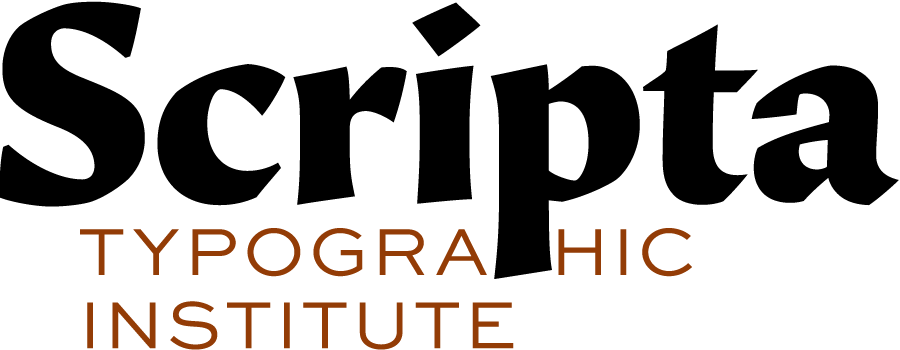Most of these are articles; some are videos of talks by me or others. I’ve pulled a quote from each of the links, so you’re not diving into them blind.
Yves Peters, “ATypI Warsaw 2016, Day 2, Part I: the return of the Multiple Master” (report for Type Network, September 16, 2016):
“After the coffee break, the highly anticipated Special OpenType Session dropped a bombshell with the biggest change in OpenType since OpenType was created. All the major players were represented — Peter Constable, Senior Program Manager at Microsoft; Ned Holbrook, Senior Software Engineer at Apple; Behdad Esfahbod, Staff Software Engineer, Tech Lead: Fonts and Text Rendering at Google; and David Lemon, Senior Manager of Type Development at Adobe. The excitement in the hall was palpable when they broke the news that the new OpenType 1.8 spec now supports variable fonts.”
John D. Berry, “Future of books: design with John D. Berry” (podcast, May 23, 2014):
Brief interview during Sprint Beyond the Book, a brainstorming conference at Stanford University, organized by Arizona State University’s Center for Science and the Imagination. “The way to do that is to start not at the bottom but at the top, showing people the differences, showing them what it could be like.”
John D. Berry, “Revisiting the onscreen page” (talk at ATypI São Paulo, October 17, 2015):
This talk was a follow-up to one that I gave at ATypI Amsterdam two years earlier. The most interesting part is when I throw it open to audience questions, and the discussion gets lively. “It has to be dynamic, it has to be not fixed. So as Yves said, you need these systems, it has to be systematic. It needs to be thought about as a process, not as a fixed end result.”
John D. Berry, “Flexible, adaptive, responsive” (Easily amused, June 16, 2011):
“The essential idea is visual design that adapts itself intelligently to the size, orientation, and resolution of the digital ‘page’ it’s displayed on. This can be done well or badly, of course, but first you’ve got to understand the importance of doing it at all.”
John D. Berry, “Unbound Pages” (The Magazine, March 28, 2013):
“What we need — and what, at least as of this week, doesn’t yet exist — is a detailed, rules-based system of adaptive layout that is not limited to any one platform or reading device. I call this ‘page H&J.’”
Gerry Leonidas at Ampersand, June 2013:
“This is what I really want: I want someone to go out there and take Markdown, which I use constantly, and take it from something that clearly has been written to deal with streams of stuff with some bits thrown on the side … and allow me to have this extra intelligence in the content – while I’m writing it – that will tell me how important something is, what sequence it has with other things, and will then allow me to ditch quite a lot of this stuff that is happening there.”
John D. Berry, “Reading into the Future (Dot-font, CreativePro.com, August 10, 2001):
“Rich Gold’s talk was the sort that makes you walk out with your head spinning. I know I, for one, could spend a lot more of my time in what he calls ‘speculative design.’ The future of reading will include everything that’s gone before, but it’s going to include a lot we can’t even dream of yet. What better than to spend your days pushing the frontiers of the dream?”
John D. Berry, “The typography of e-books” (Easily amused, May 10, 2010):
“Some people like justified pages on an e-book page because they’re used to it in printed books. Fine. But they’re also used to better typesetting in printed books (even sloppily done ones) than we’re getting so far in e-books.”
John D. Berry, “Designing digital books” (Easily amused, August 6, 2011):
“Basically, what we need is control over all the typographic aspects – but give up the idea of control to make a static page. We want that level of control … over a dynamic page.”
John D. Berry, “What is needed” (Easily amused, March 6, 2012):
“Up until now, in the digital work flow, the software’s composition engine has been used in the creation of the published document; the human reader is reading a static page. But now, with flexible layout and multiple reading devices, the composition engine needs to be built into the reading device, because that’s where the final page composition is going to take place.”
John D. Berry, “Reading matter” (Easily amused, May 3, 2011):
“He doesn’t just show off bad examples – something that’s absurdly easy to do with almost any current form of e-reader – he spells out the kind of typographic decisions that need to be made in laying out a page of text, whether that page is fixed and printed or fluid and controlled by dynamic rules.”
